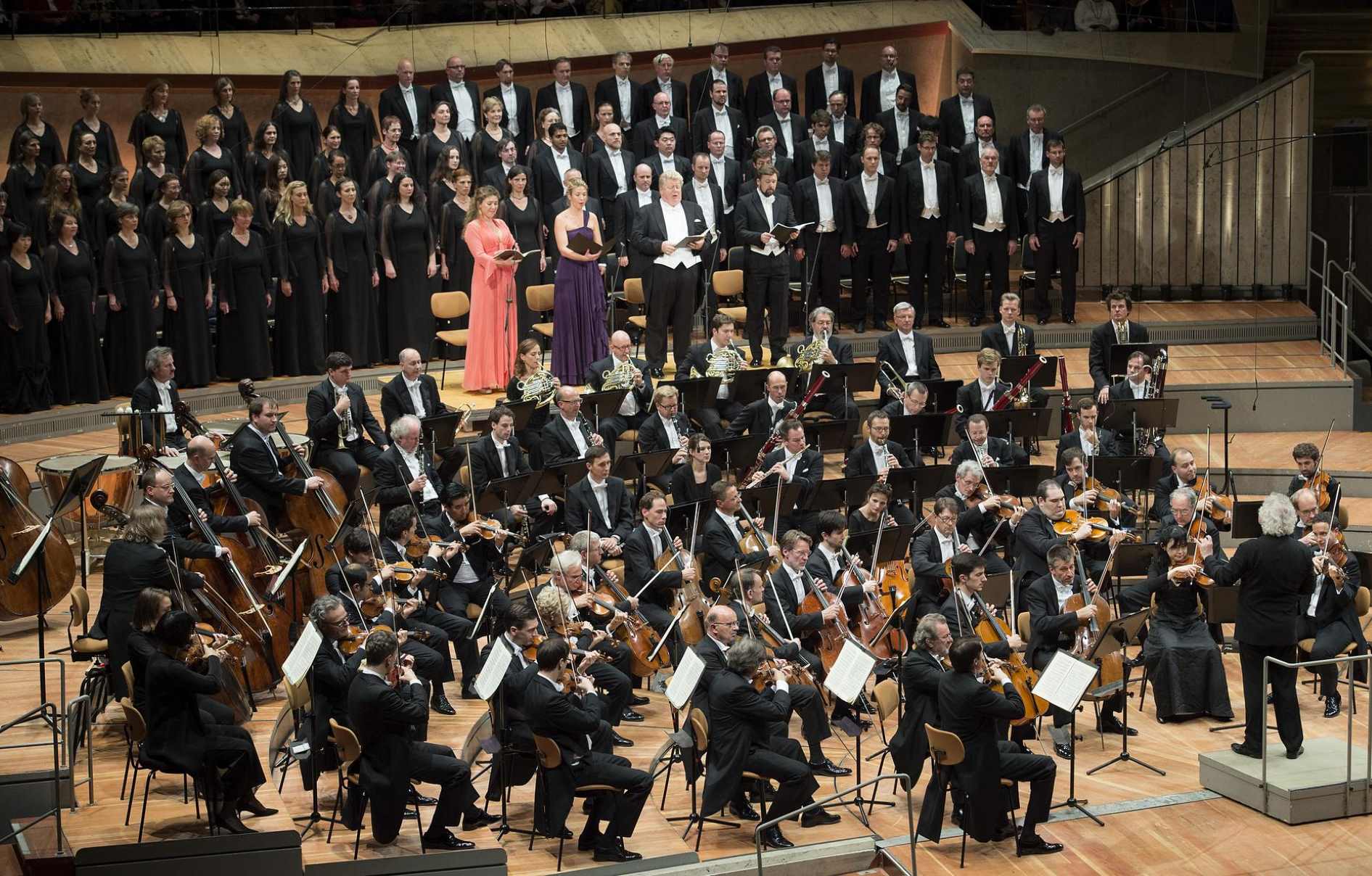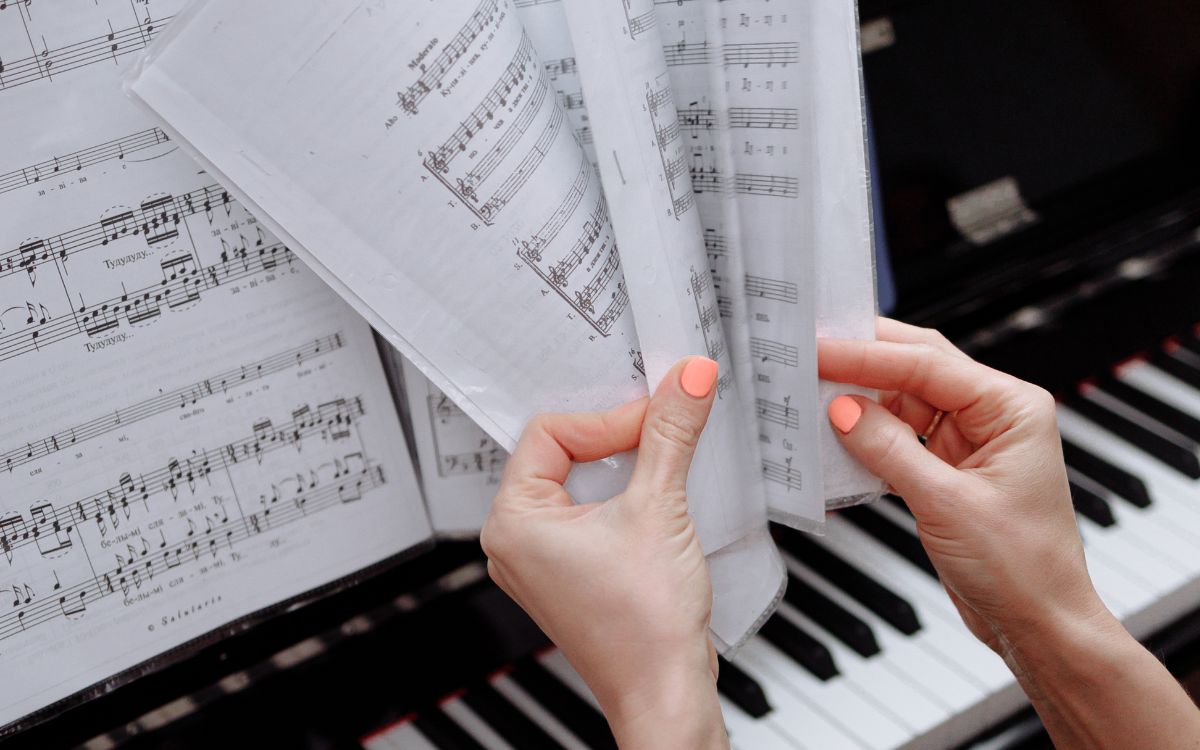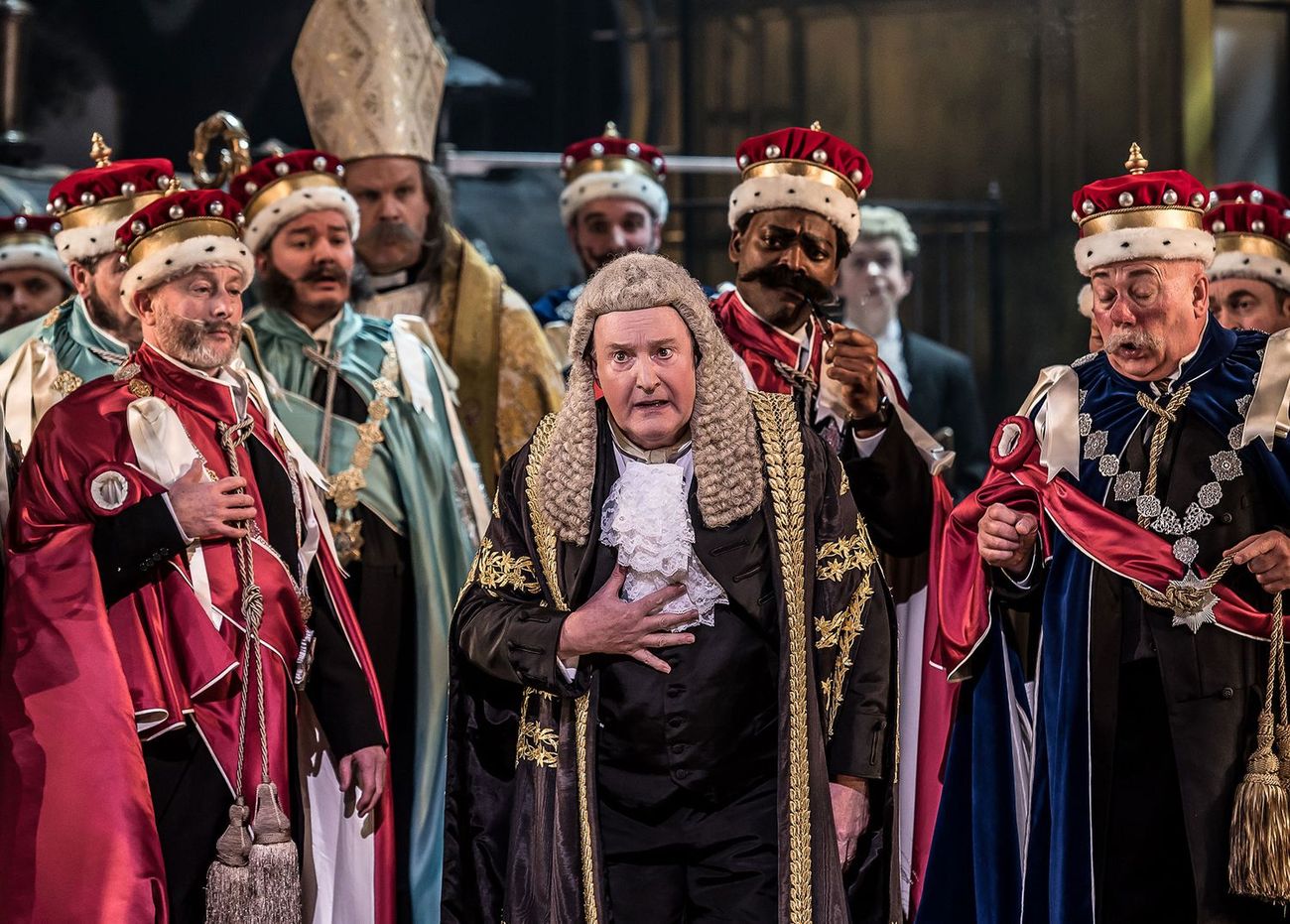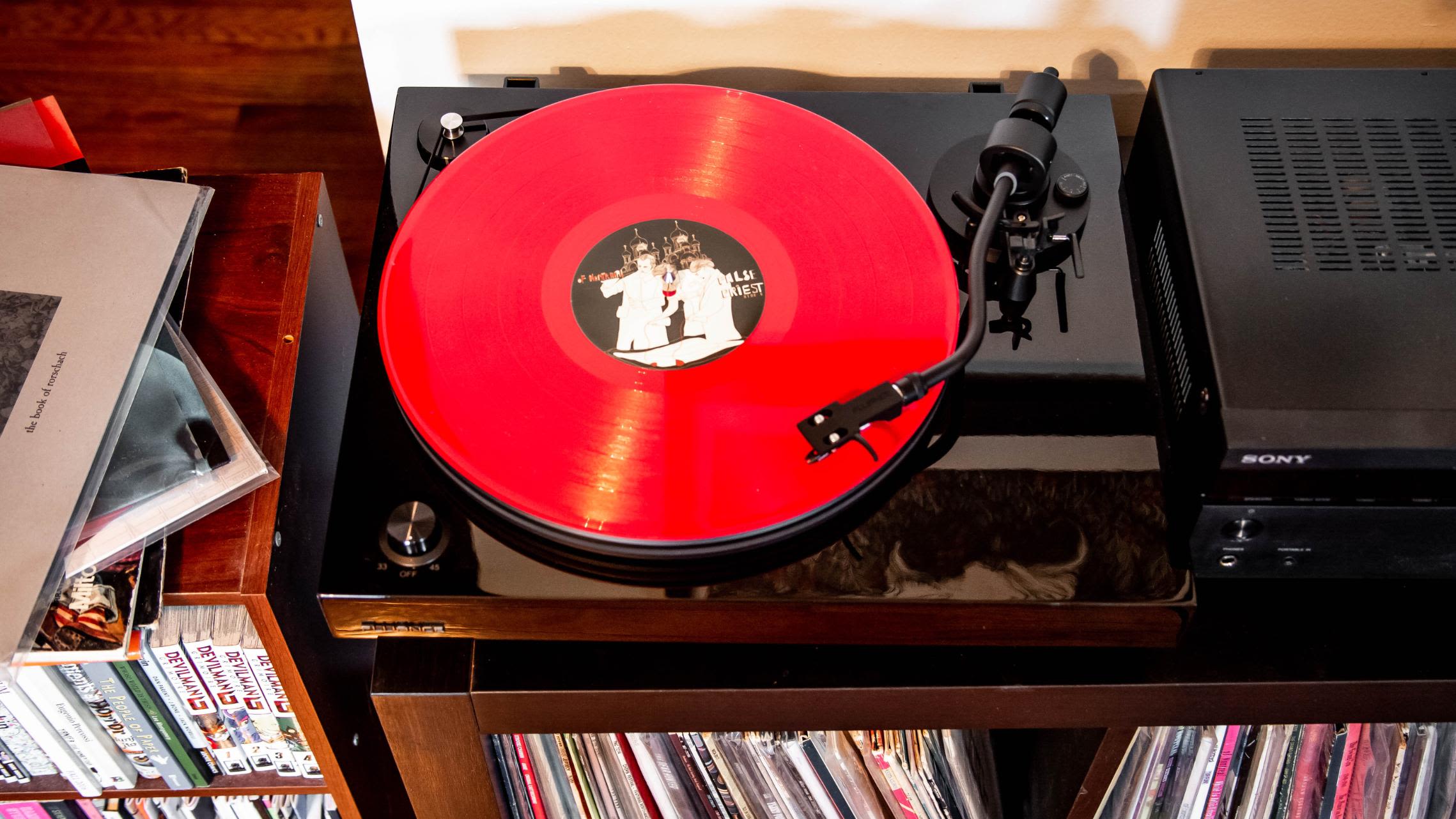Home>Genres>Symphony>What Is The Difference Between A Symphony And Philharmonic


Symphony
What Is The Difference Between A Symphony And Philharmonic
Modified: February 24, 2024
Discover the fascinating distinction between a symphony and a philharmonic. Uncover the unique characteristics and roles that symphonies play in the orchestral world.
(Many of the links in this article redirect to a specific reviewed product. Your purchase of these products through affiliate links helps to generate commission for AudioLover.com, at no extra cost. Learn more)
Table of Contents
- Introduction
- Definition of a Symphony
- Definition of a Philharmonic
- Historical Background of Symphonies
- Historical Background of Philharmonics
- Key Differences between Symphonies and Philharmonics
- Similarities between Symphonies and Philharmonics
- Roles and Responsibilities of a Symphony
- Roles and Responsibilities of a Philharmonic
- Notable Symphonies around the World
- Notable Philharmonics around the World
- Conclusion
Introduction
When it comes to classical music, two terms often come up in discussions – symphony and philharmonic. While many people use these terms interchangeably, they actually have distinct meanings and refer to different entities in the world of classical music. Understanding the difference between a symphony and a philharmonic can help deepen your appreciation for these musical ensembles and their contributions to the arts.
Both symphonies and philharmonics are instrumental groups that perform symphonic music, but their structures, organizations, and historical backgrounds set them apart.
In this article, we will explore the definitions of symphonies and philharmonics, delve into their historical backgrounds, examine their roles and responsibilities, and highlight some notable symphonies and philharmonics around the world.
Whether you are a classical music enthusiast, a musician, or simply curious about the inner workings of these renowned musical institutions, read on to discover the fascinating differences and similarities between symphonies and philharmonics.
Definition of a Symphony
A symphony is a large-scale composition for orchestra that typically consists of four movements. It is considered one of the most important forms of classical music and has been a centerpiece of Western music tradition for centuries.
The word “symphony” derives from the Greek word “symphonia,” which means “agreement of sound.” This reflects the essence of a symphony, where various instruments come together harmoniously to create a cohesive and expressive musical work.
Each movement within a symphony has its own distinct character and musical structure. The first movement is often in a sonata form, showcasing the main melodic ideas and introducing the thematic material of the piece. The second movement is typically slower and more lyrical, providing a contrast to the energy of the first movement. The third movement is often in a minuet or scherzo form, featuring a lively and rhythmic character. Finally, the fourth movement brings the symphony to a grand finale, often with a fast and energetic tempo.
One of the defining features of a symphony is its orchestration. A symphony is performed by a symphony orchestra, which is composed of different sections of instruments, such as strings, woodwinds, brass, and percussion. The orchestra is led by a conductor, who directs the musicians and ensures a cohesive interpretation of the music.
Symphonies are typically written by renowned composers and are regarded as pinnacle works of their respective eras. Throughout history, composers like Beethoven, Mozart, Haydn, and Mahler have created symphonies that have left a lasting impact on the classical music world.
Overall, a symphony is a complex and multi-dimensional musical composition that showcases the depth of orchestral sound and the compositional prowess of the composer. Its rich history and continued popularity make it an integral part of classical music repertoire.
Definition of a Philharmonic
A philharmonic, often referred to as a philharmonic orchestra, is a professional musical ensemble that is similar to a symphony orchestra in many respects. The term “philharmonic” is derived from the Greek words “philos” meaning “loving” and “harmonia” meaning “harmony,” which signifies the collective passion for harmonious music.
Philharmonics are known for their versatility and flexibility in performing a wide range of musical styles and genres. While they also perform symphonic compositions like symphonies, their repertoire extends to include other musical forms such as concertos, overtures, suites, and choral works. This broader range of musical styles allows philharmonics to engage with a diverse audience and cater to a variety of musical preferences.
The term “philharmonic” is often used interchangeably with “symphony,” leading to confusion. However, there is a subtle difference between the two. While a symphony often refers to a specific composition or form of music, a philharmonic refers to the ensemble or orchestra that performs such music.
Philharmonic orchestras are composed of a diverse group of highly skilled musicians who play a wide array of instruments, including strings, woodwinds, brass, and percussion. Like symphony orchestras, they are guided by a conductor who ensures precision, unity, and interpretation of the music. The conductor plays a crucial role in shaping the sound and dynamics of the orchestra, leading to a cohesive and impactful performance.
Philharmonics are typically associated with major cities or regions, and their names often reflect their geographic location. For example, the New York Philharmonic, the Berlin Philharmonic, and the Vienna Philharmonic are renowned orchestras deeply rooted in the cultural fabric of their respective cities.
Philharmonics have a rich history and have evolved over time. They have become cultural institutions that not only provide exceptional musical performances but also engage in educational outreach programs and collaborate with other artistic organizations, such as opera companies and ballet companies, to create powerful and immersive artistic experiences for audiences.
In summary, a philharmonic is a versatile and dynamic orchestra that performs a wide range of musical compositions. Their commitment to excellence and their ability to adapt to different musical genres make them an essential part of the classical music landscape.
Historical Background of Symphonies
The history of symphonies can be traced back to the 17th century, where instrumental compositions began to gain prominence in the Baroque period. However, it wasn’t until the Classical period in the mid-18th century that symphonies emerged as a distinct form of musical expression.
The origins of the symphony can be attributed to the Italian composer and violinist, Giovanni Battista Sammartini. He is often referred to as the “Father of the Symphony” due to his influential role in developing the early symphonic form.
During the Classical period, composers such as Joseph Haydn and Wolfgang Amadeus Mozart played a pivotal role in shaping the symphony as we know it today. Haydn, in particular, composed over 100 symphonies and is often considered one of the greatest symphonic composers of all time.
The structure and composition of symphonies evolved during the Romantic period in the 19th century, with composers such as Ludwig van Beethoven, Franz Schubert, and Pyotr Ilyich Tchaikovsky pushing the boundaries and expanding the expressive possibilities of the genre.
Beethoven’s symphonies, in particular, revolutionized the form with their innovative structures, use of thematic development, and powerful emotional impact. His Ninth Symphony, also known as the “Choral Symphony,” is a groundbreaking work that introduced vocal soloists and choir, breaking the traditional instrumental boundaries of the symphony.
In the 20th century, composers like Gustav Mahler, Dmitri Shostakovich, and Igor Stravinsky continued to push the boundaries of symphonic composition, incorporating new harmonies, rhythms, and musical techniques.
Today, symphonies continue to be composed and performed around the world, showcasing the diversity and creativity of contemporary composers. They are performed in prestigious concert halls, as well as outdoor venues, reaching a wide range of audiences and captivating listeners with their orchestral grandeur and emotional depth.
The evolution of symphonies over the centuries has made them a cornerstone of classical music, reflecting the cultural and artistic development of different eras. Their enduring popularity and continued exploration by composers highlight the timeless appeal and significance of this remarkable musical form.
Historical Background of Philharmonics
The history of philharmonics dates back to the 19th century when the growth of orchestral music led to the establishment of professional orchestras and the need for a collective identity. The term “philharmonic” was first used by the London-based “Philharmonic Society” in 1813, which aimed to promote concerts and support talented musicians.
The success and influence of the London Philharmonic Society sparked the establishment of similar organizations in other parts of Europe. The Vienna Philharmonic, founded in 1842, is one of the oldest and most renowned philharmonics in the world, known for its association with the iconic Vienna New Year’s Concert.
In the 20th century, more philharmonics emerged in major cities, reflecting the growing demand for orchestral music. These orchestras, such as the New York Philharmonic (1842) and the Berlin Philharmonic (1882), became pillars of cultural life in their respective cities.
The philharmonics played a crucial role in promoting classical music and contributing to the development of orchestral repertoire. They commissioned new works from prominent composers, organized regular concert seasons, and attracted leading musicians from around the world for performances and collaborations.
Philharmonics also became ambassadors of their city and country, representing the cultural heritage and artistic achievements on an international level. They participated in tours and music festivals worldwide, showcasing the excellence and diversity of their respective musical traditions.
As classical music entered the modern era, philharmonics adapted to the changing musical landscape. They embraced contemporary compositions and collaborated with living composers to present innovative and groundbreaking works. They also explored cross-genre collaborations, combining classical music with other styles such as jazz, pop, and world music, in order to engage new audiences and bridge the gap between different musical genres.
Today, philharmonics continue to thrive and evolve, continuing their legacy of excellence and artistic innovation. They remain at the forefront of classical music, providing unforgettable performances, nurturing musical talents, and inspiring generations of listeners.
Overall, the historical background of philharmonics exemplifies their vital role as cultural institutions that preserve and promote classical music, enriching the musical landscape of their cities and leaving an indelible mark on the cultural heritage of humanity.
Key Differences between Symphonies and Philharmonics
While symphonies and philharmonics are both instrumental musical ensembles associated with classical music, there are several key differences that set them apart:
- Definition: Symphonies refer to a specific form of musical composition, characterized by a multi-movement structure for orchestra. On the other hand, philharmonics are the orchestras or ensembles that perform a wide range of musical styles including symphonic works.
- Repertoire: Symphonies primarily focus on performing symphonic compositions, including symphonies from renowned composers. In contrast, philharmonics have a broader repertoire that encompasses symphonies as well as other forms of orchestral music, such as concertos, overtures, suites, and choral works.
- Organization and Name: Symphonies are often named after the composer who composed them, such as Beethoven’s Symphony No. 5. Philharmonics, on the other hand, are usually named after the city or region they are associated with, like the London Philharmonic Orchestra or the Boston Symphony Orchestra.
- Focus: Symphonies, as musical compositions, are the main focus of symphonies. They are carefully composed and structured to convey a specific musical narrative or idea. Philharmonics, on the other hand, are focused on performing a diverse range of musical repertoire, showcasing versatility and adaptability.
- Tradition and Historical Background: Symphonies have a longer historical background and tradition, dating back to the 17th and 18th centuries. They have evolved over time, with contributions from renowned composers of different eras. Philharmonics, on the other hand, have a more recent history, emerged in the 19th century as professional orchestras aimed at promoting concerts and supporting talented musicians.
While these differences exist, it is important to note that the boundaries between symphonies and philharmonics can sometimes be blurred, as there are symphony orchestras that use the term “philharmonic” in their name. Additionally, some orchestras may perform both symphonic and non-symphonic repertoire, making the distinction less rigid.
Despite the differences, both symphonies and philharmonics contribute immensely to the world of classical music, enriching cultural experiences and providing audiences with exceptional orchestral performances.
Similarities between Symphonies and Philharmonics
Although symphonies and philharmonics have distinct characteristics, they also share several important similarities:
- Instrumentation: Both symphonies and philharmonics employ a similar range of instruments, including strings, woodwinds, brass, and percussion. The combination of these instrument families creates the rich and diverse orchestral sound that is characteristic of both ensembles.
- Ensemble Structure: Both symphonies and philharmonics follow a similar ensemble structure. They are led by a conductor, who serves as the artistic director and guides the orchestra’s interpretation of the music. The musicians of both ensembles work together to create a unified and harmonious performance.
- Excellence and Expertise: Symphonies and philharmonics are renowned for their commitment to excellence and high level of musical expertise. Musicians in both ensembles undergo rigorous training and possess exceptional technical and artistic skills, ensuring the highest quality performances.
- Performance Venues: Both symphonies and philharmonics perform in prestigious concert halls and venues that are acoustically designed to enhance the orchestral sound. These venues provide optimal listening experiences, allowing audiences to fully immerse themselves in the music.
- Cultural Contributions: Both symphonies and philharmonics have made significant cultural contributions in their respective cities and regions. They serve as cultural ambassadors, representing the artistic traditions and heritage of their communities. Additionally, they contribute to the local economy by attracting tourists and promoting cultural tourism.
- Collaborations: Both symphonies and philharmonics often collaborate with other artistic organizations, such as opera companies, ballet companies, and guest soloists. These collaborations showcase the versatility and adaptability of the ensembles, creating dynamic and interdisciplinary performances.
These similarities underline the shared essence of symphonies and philharmonics as instrumental ensembles dedicated to the performance of orchestral music. Their mutual goal is to engage and inspire audiences through the power and beauty of classical music, creating memorable musical experiences that transcend time and cultural boundaries.
Roles and Responsibilities of a Symphony
A symphony, as an instrumental ensemble, carries out various roles and responsibilities in the realm of classical music. These roles ensure the smooth functioning of the orchestra and contribute to the creation of exceptional orchestral performances. Here are some key roles and responsibilities of a symphony:
- Performing Concerts: One of the primary responsibilities of a symphony is to present regular concert performances. These concerts showcase the symphony orchestra’s talent and repertoire, providing audiences with the opportunity to experience live orchestral music at its finest. Symphonies perform a diverse range of compositions, including symphonies, concertos, overtures, and other orchestral works.
- Artistic Direction: Under the guidance of a conductor, a symphony orchestrates the artistic interpretation of the music. The conductor shapes the performance by conveying his or her musical vision and leading the musicians through rehearsals and performances. The conductor ensures that the orchestra delivers a cohesive and expressive interpretation of the composer’s intent.
- Collaborations: Symphonies often collaborate with other musicians, soloists, singers, and even other orchestras, to create unique and dynamic performances. Collaborations can include joint concerts, guest soloist appearances, or partnerships with other artistic organizations like opera companies or ballet companies. These collaborations enhance the symphony’s repertoire and provide diverse and innovative musical experiences.
- Community Engagement: Symphonies play an important role in engaging with the local community. They often organize outreach programs, educational initiatives, and community concerts to foster a love for classical music, especially among younger generations. These endeavors aim to make orchestral music more accessible and inclusive, allowing individuals of all backgrounds to experience the transformative power of symphonic performances.
- Preservation of Classical Music: Symphonies contribute to the preservation and promotion of classical music. They perform iconic symphonies and other compositions from renowned composers, ensuring that these works continue to be appreciated and passed on to future generations. By performing classical repertoire, symphonies help maintain the cultural heritage and legacy of orchestral music.
- Professional Development: Symphonies provide opportunities for talented musicians to hone their craft and develop their professional careers. Many symphonies hold auditions to select exceptional musicians to join their ranks. Being part of a symphony allows these musicians to perform challenging repertoire, grow artistically, and collaborate with esteemed colleagues.
The roles and responsibilities of a symphony extend beyond the stage, serving as custodians of classical music and cultural ambassadors for their communities. Through their performances, educational initiatives, and collaborative efforts, symphonies enrich the musical landscape and contribute to the appreciation and enjoyment of orchestral music.
Roles and Responsibilities of a Philharmonic
A philharmonic, as a professional musical ensemble, has diverse roles and responsibilities that contribute to the promotion and appreciation of orchestral music. From performing concerts to community engagement, a philharmonic orchestra encompasses a range of responsibilities. Here are some key roles and responsibilities of a philharmonic:
- Performing Concerts: A primary responsibility of a philharmonic is to present a series of concerts, showcasing a wide range of musical genres and compositions. Philharmonics perform symphonies, concertos, overtures, choral works, and other forms of orchestral music, providing audiences with diverse and memorable experiences of classical music.
- Artistic Excellence: Philharmonics strive for artistic excellence in their performances. They dedicate themselves to achieving a high level of technical proficiency, interpretative nuance, and musical expression. Musicians in a philharmonic orchestra work together under the guidance of a conductor to deliver compelling and emotionally engaging performances.
- Musical Education and Outreach: Philharmonics take an active role in music education and outreach programs. They engage with schools, community organizations, and individuals through workshops, masterclasses, and educational concerts, fostering a love for orchestral music and nurturing the talent of young musicians.
- Cultural Ambassadors: Philharmonics serve as cultural ambassadors for their city or region, showcasing the artistic traditions and heritage through their performances. They contribute to the identity and reputation of their community on a national and international scale, promoting cultural exchange and fostering a sense of pride and appreciation for local arts and culture.
- Commissioning and Premiering New Works: Philharmonics often engage in commissioning and premiering new compositions. By collaborating with contemporary composers and supporting the creation of new works, they contribute to the development and evolution of orchestral repertoire, ensuring the continued vitality of classical music for future generations.
- Collaborations: Philharmonics frequently collaborate with other artistic organizations and musicians. They collaborate with opera companies, ballet companies, guest soloists, and choirs to create multidisciplinary performances and enrich the musical experience for audiences. These collaborations bring together different art forms, fostering creativity and innovation.
In addition to these main responsibilities, philharmonics also participate in recordings, broadcast performances, and international tours, expanding their reach and impact. They serve as pillars of cultural life and contribute to the cultural and economic vitality of their communities.
Ultimately, the roles and responsibilities of a philharmonic extend beyond the concert hall, embodying the dedication to excellence, artistic growth, and community engagement. Through their performances and outreach initiatives, philharmonics enrich the cultural landscape, inspire audiences, and ensure the continued appreciation of orchestral music.
Notable Symphonies around the World
The world is home to numerous renowned symphony orchestras, each with its own unique history and artistic contributions. Here are some notable symphonies from around the world:
- Vienna Philharmonic: Founded in 1842, the Vienna Philharmonic is one of the oldest and most esteemed symphony orchestras. Recognized for its distinctive sound and association with the Vienna New Year’s Concert, the orchestra continues to uphold the rich tradition of Viennese music.
- Berlin Philharmonic: Established in 1882, the Berlin Philharmonic is renowned for its exceptional artistry and innovative interpretations. Alongside its world-class performances, the orchestra is celebrated for its collaborations and recordings under the baton of notable conductors, including Herbert von Karajan and Sir Simon Rattle.
- New York Philharmonic: Dating back to 1842, the New York Philharmonic is one of the oldest symphony orchestras in the United States. It has made significant contributions to the development of American orchestral music and is known for its dedication to expanding the classical music repertoire.
- Vienna Symphony Orchestra: Established in 1900, the Vienna Symphony Orchestra has garnered international acclaim for its versatility and wide-ranging repertoire. It has a distinct relationship with Viennese musical tradition, excelling in performances of works by composers such as Gustav Mahler and Richard Strauss.
- London Symphony Orchestra: Founded in 1904, the London Symphony Orchestra is renowned for its virtuosity and dynamic performances. It has collaborated with some of the greatest conductors and soloists, producing iconic recordings and earning numerous awards and accolades.
- Chicago Symphony Orchestra: Founded in 1891, the Chicago Symphony Orchestra is known for its rich history and technical brilliance. It has consistently been recognized as one of the leading orchestras in the United States and is admired for its commitment to both traditional and contemporary repertoire.
These symphony orchestras, among many others, have left a lasting impact on the classical music world through their artistic excellence, cultural contributions, and commitment to preserving the legacy of orchestral music. They continue to inspire audiences worldwide with their emotive interpretations and virtuosic performances.
Notable Philharmonics around the World
Philharmonics are esteemed orchestras that have made significant contributions to the world of classical music. Here are some notable philharmonics from around the world:
- Berlin Philharmonic: The Berlin Philharmonic, known as one of the world’s finest orchestras, bears the title of “philharmonic” in its name. Founded in 1882, the orchestra is highly regarded for its exceptional musicianship, innovative programming, and collaborations with renowned conductors and soloists.
- Vienna Philharmonic: The Vienna Philharmonic, founded in 1842, is another renowned philharmonic orchestra. Recognized for its distinctive Viennese sound and association with the Vienna New Year’s Concert, the orchestra has left an indelible mark on the classical music world with its performances under the iconic “Golden Hall” of the Musikverein.
- London Philharmonic Orchestra: Formed in 1932, the London Philharmonic Orchestra is highly respected for its world-class performances and versatile repertoire. The orchestra has established itself as a leading cultural institution in London, presenting exceptional symphonic concerts and collaborations with prominent conductors and soloists.
- New York Philharmonic: The New York Philharmonic, founded in 1842, is one of the oldest philharmonic orchestras in the United States. Known for its historic performances and powerful interpretations, the orchestra has played a significant role in shaping the musical landscape of New York City and continues to captivate audiences worldwide with its artistic endeavors.
- Philharmonia Orchestra: The Philharmonia Orchestra, established in 1945, is a leading British orchestra acclaimed for its extraordinary performances and extensive recordings. With its roster of exceptional musicians, the orchestra has gained worldwide recognition for its interpretations of both traditional and contemporary repertoire.
- Munich Philharmonic: The Munich Philharmonic, founded in 1893, is renowned for its exceptional artistry and vibrant performances. Led by esteemed conductors such as Sergiu Celibidache and Valery Gergiev, the orchestra has left an indelible mark on the classical music world, blending tradition and innovation in its musical offerings.
These notable philharmonics, alongside many others, have consistently demonstrated their commitment to excellence, delivering extraordinary performances and enriching the global classical music landscape. They continue to inspire, captivate, and elevate the cultural experience for audiences worldwide.
Conclusion
In conclusion, symphonies and philharmonics are integral parts of the classical music world, each with its own distinct role and contributions. Symphonies are compositions characterized by multi-movement structures, often performed by symphony orchestras. On the other hand, philharmonics refer to the orchestras or ensembles that perform a wide range of orchestral music, including symphonies, concertos, and more.
While symphonies focus primarily on the performance of symphonic compositions, philharmonics have a broader repertoire that encompasses various musical genres. Both symphonies and philharmonics play crucial roles in promoting classical music, engaging with audiences, and preserving the rich cultural heritage of orchestral music.
Notable symphonies and philharmonics from around the world have left lasting impressions. From the Vienna Philharmonic’s association with the Vienna New Year’s Concert to the Berlin Philharmonic’s renowned excellence and versatility, these orchestras have shaped the history and tradition of classical music.
Symphonies and philharmonics share similarities through their instrumentation, dedication to artistic excellence, collaborations, community engagement, and educational outreach. They both serve as cultural ambassadors, contributing to the appreciation and understanding of orchestral music across the globe.
Whether it is the evocative power of a symphony or the diverse repertoire of a philharmonic, these musical institutions continue to captivate audiences, inspire musicians, and enrich our cultural experiences. By attending their performances and supporting their endeavors, we embrace the world of classical music and ensure that it thrives for generations to come.











